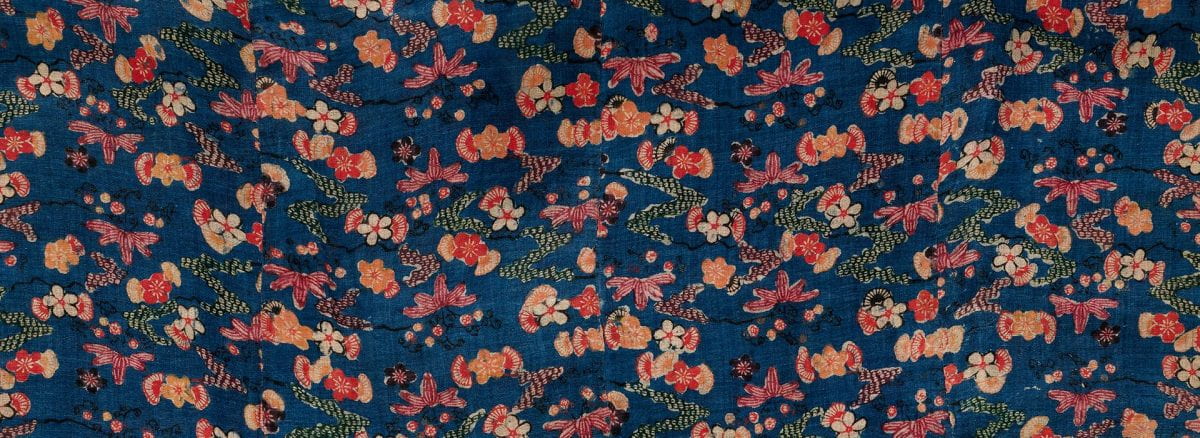Okinawa, Japan’s southernmost prefecture, flourished as the independent Ryukyu Kingdom from 1429-1879. A dynamic and cosmopolitan trading center, the kingdom was famous for its unique, brilliantly colored fabrics patterned with “bingata,” a type of resist dyeing. This bingata kimono dates from the 19th century, potentially within the period of the Ryukyu Kingdom, with cloth made from ramie, a plant fiber native to East Asia.
Okinawan royal authorities set exacting standards for bingata, making them desirable trade goods. Drawing on Okinawa’s strong trading ties to China, Japan, India and Indonesia, bingata masters incorporated technical expertise from those countries while producing unique motifs based on local flora and fauna.

Creating bingata is a multistep, labor-intensive process. First, the artist draws a design on mulberry paper and then cuts it to form a stencil. Next, he places the stencil on cloth and scrapes a rice paste across it to prevent dyes from coloring certain areas. He then applies pigments or dyes to the fabric, progressing from lighter to darker colors, and sometimes adding details around the edges of the design. After steaming and washing the cloth, the artist applies the rice paste resist again to the colored areas and finishes the background either with a wide brush or by dipping the cloth into a dye bath.
This specialized process made bingata very expensive, so only the nobility or wealthy people could afford it. Patterns for royalty were bold and colorful. Only the royal family could wear yellow, while nobility could wear pale blue. Today, bingata is worn in Okinawa during festivals and traditional performances.


